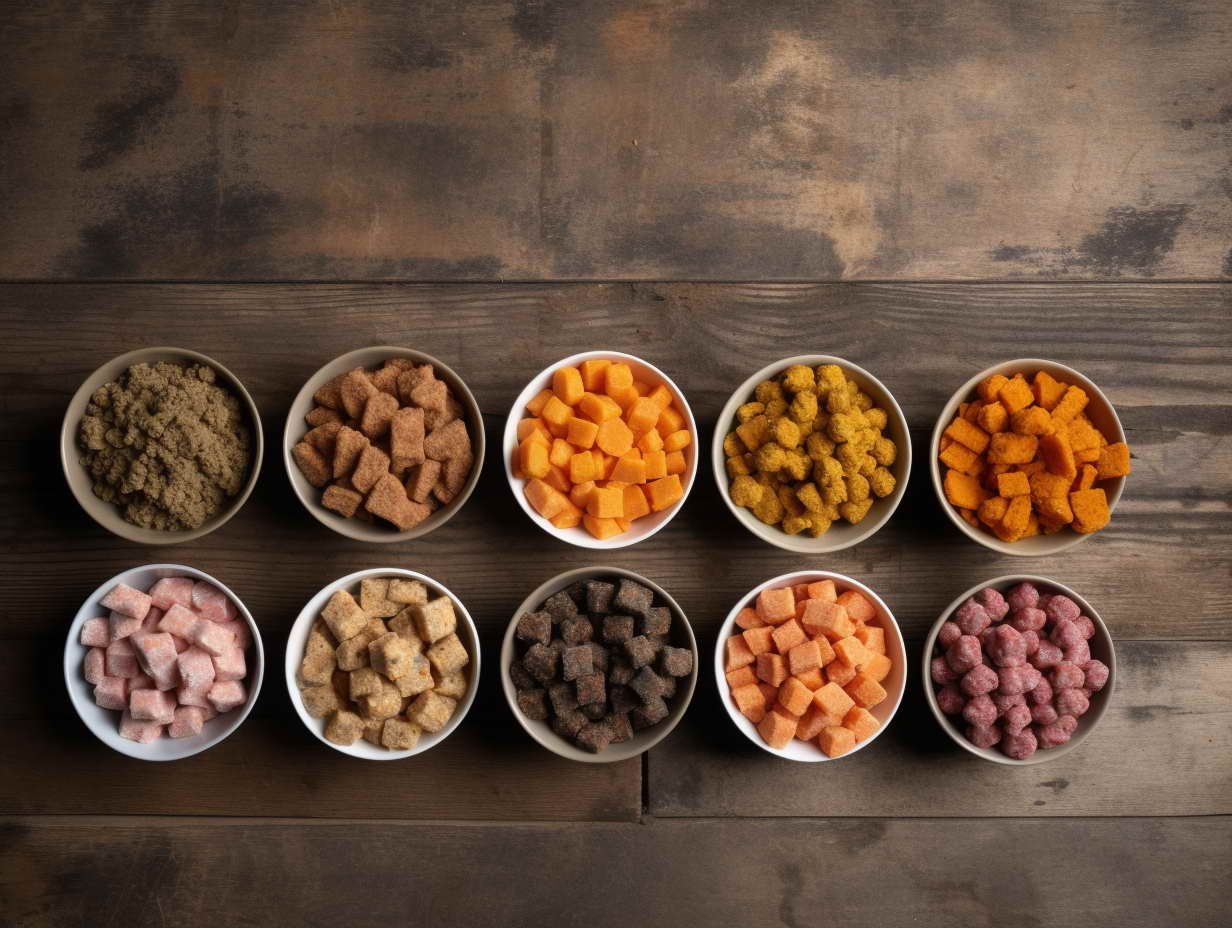Raw Dog Food Ratios: A Comprehensive Guide
Introduction
Welcome to the ultimate guide on Raw Dog Food Ratios! If you’re a pet owner looking to provide the best nutrition for your four-legged friend, you’ve come to the right place. In this comprehensive article, we’ll delve into the world of raw dog food ratios, ensuring that your dog gets the optimal diet for a happy and healthy life.
Understanding Raw Dog Food Ratios in Detail
To truly provide the best nutrition for your canine companion, it’s crucial to dive deeper into the world of Raw Dog Food Ratios. Let’s explore each component in more detail:
Muscle Meat (45-60%)
Muscle meat is the cornerstone of your dog’s diet. This category includes a variety of lean meats like chicken, turkey, beef, and even game meats like venison. Here’s what you need to know:
- Quality Matters: Opt for high-quality, human-grade meat. Avoid processed or seasoned meats as they may contain harmful additives.
- Variety is Key: Rotate between different protein sources to provide a broad spectrum of nutrients. Each meat type offers unique benefits.
- Minimize Fat: While some fat is essential, especially for active dogs, too much fat can lead to obesity. Remove excess fat from cuts or choose leaner options.

Bones (10-15%)
Bones are essential for several reasons, primarily dental health and mineral intake. However, not all bones are suitable for dogs. Here are some considerations:
- Edible Bones: Choose bones that are safe to eat, such as chicken necks, turkey necks, or beef ribs. These not only provide essential minerals but also help keep your dog’s teeth clean.
- Avoid Weight-Bearing Bones: Steer clear of weight-bearing bones like large beef leg bones. They can be too hard and may cause dental fractures.
- Monitor Chewing: Supervise your dog while they chew on bones to prevent choking hazards. Remove any small bone fragments to ensure safety.
Organ Meat (10%)
Organ meats, such as liver and kidney, are nutritional powerhouses for your dog. Here’s why they are vital:
- Rich in Nutrients: Organ meats are packed with essential vitamins and minerals, including vitamin A, B vitamins, iron, and zinc.
- Moderation is Key: While organ meats are highly nutritious, they should only make up around 10% of your dog’s diet. Too much can lead to vitamin imbalances.
Fruits and Vegetables (10-15%)
Including fruits and vegetables in your dog’s diet provides fiber, vitamins, and antioxidants. Here’s how to incorporate them:
- Select Dog-Friendly Options: Not all fruits and vegetables are safe for dogs. Opt for dog-friendly choices like carrots, peas, sweet potatoes, and apples.
- Prepare Properly: Ensure fruits and vegetables are cooked or pureed to make them more digestible for your dog.
- Avoid Onions and Garlic: These ingredients are toxic to dogs and should never be included.
Supplements (5-10%)
Supplements can be beneficial to cover any potential nutritional gaps in your dog’s diet. Here’s what you need to know:
- Consult Your Vet: Always consult your veterinarian before adding supplements. They can recommend the right ones based on your dog’s specific needs.
- Common Supplements: Some common supplements include fish oil for omega-3 fatty acids, glucosamine for joint health, and probiotics for gut health.
- Dosage Matters: Follow your vet’s recommendations for the correct dosage of supplements. Too much of certain vitamins and minerals can be harmful.
By understanding these components of Raw Dog Food Ratios, you’ll be well-equipped to create a balanced and nutritious diet for your furry friend. Remember, every dog is unique, so consulting with your veterinarian for personalized advice is essential to ensure your dog’s specific dietary needs are met.

Crafting the Perfect Raw Dog Food Ratios
Now that you understand the components, let’s explore how to create the perfect meal:
Balancing Macronutrients
- Protein: Focus on high-quality sources like lean meats and fish.
- Fats: Incorporate healthy fats like salmon oil or flaxseed oil.
- Carbohydrates: Limited, but essential from vegetables and fruits.
Feeding Guidelines
- Size Matters: Adjust portions according to your dog’s size and activity level.
- Consult a Vet: Seek professional advice to tailor the ratios to your dog’s specific needs.
- Transition Slowly: Introduce the new diet gradually to avoid digestive issues.
FAQs
Are Raw Dog Food Ratios Suitable for All Breeds?
Yes, raw dog food ratios can be adapted for all breeds. Consult your vet for personalized recommendations.
Can I Include Grains in Raw Dog Food Ratios?
While grains are not typical in raw diets, some dogs tolerate them. Ensure they are cooked and in minimal amounts.
How Do I Prevent Nutritional Imbalances?
Regularly rotate protein sources and consider a high-quality dog multivitamin.
Can Puppies Eat Raw Dog Food?
Yes, puppies can benefit from raw diets. Ensure they get the right balance of nutrients for growth.
Should I Include Supplements?
Supplements can be beneficial to cover any nutritional gaps. Discuss with your vet for specific recommendations.
How Often Should I Feed My Dog Raw Food?
Feeding frequency varies by age and breed. Typically, adult dogs are fed once or twice a day.
Conclusion
In conclusion, understanding and implementing raw dog food ratios can significantly impact your dog’s health and vitality. By following the guidelines in this article and consulting with your veterinarian, you can provide your furry friend with a well-balanced and nutritious diet that promotes a long and happy life.

Leave a Reply